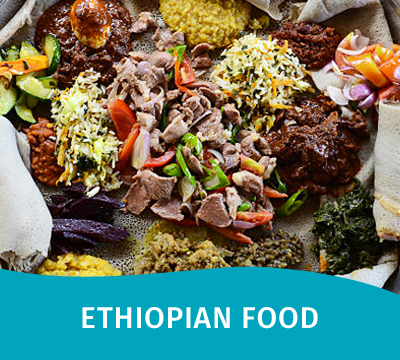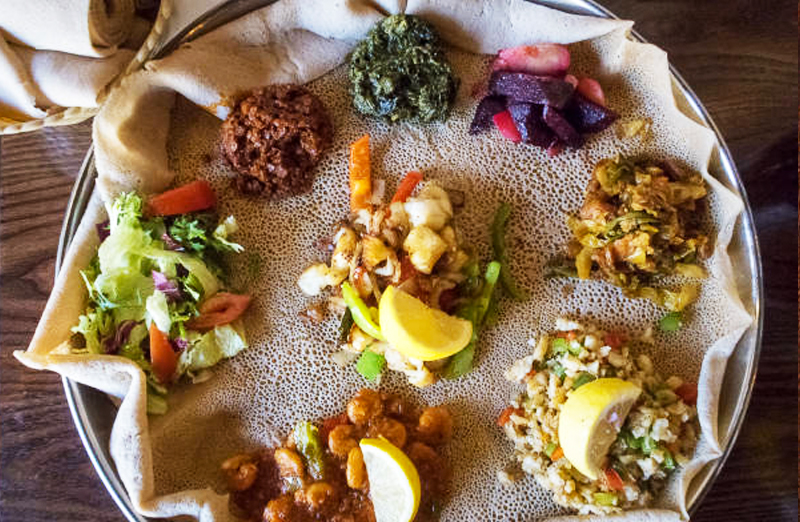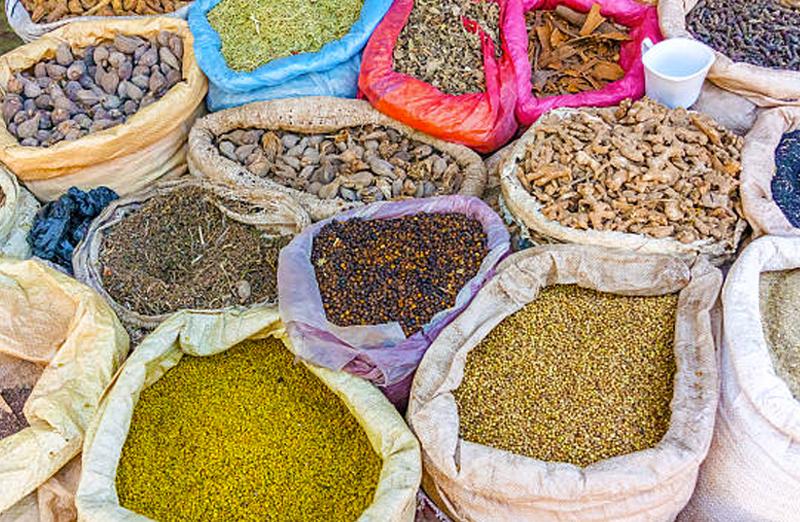Ethiopian Food

Ethiopian Food. If you haven’t tried it yet, you’re in for a special surprise. Flavorful and delicious, this unique set of dishes is quite unlike any other. And if you have already tried it, hopefully this little explanation of its nuances will help you appreciate it more!

Ethiopia is a diverse country with diverse cultures, and while there are some dishes that are unique to some parts of the country, this is our guide to the staples that are eaten and available in most parts of the country – Injera, the different sauces that go with it, seasonal specialties, and of course, spices!
This guide also presents Ethiopian food cultures and norms around how food is served and consumed which is usually in a social setting.
Teff and The Mighty Injera
The foundation of most Ethiopian dishes is Injera, a round shaped soft flatbread, traditionally made with fermented Teff flour. Teff is a tiny gluten-free grain native to the Ethiopian highlands. It is rich in iron, calcium, protein and vitamins hence its status as a new super-food.

As Teff becomes readily available in our supermarkets, it is being used in a variety of sweet and savoury dishes as a gluten-free alternative to flour. In Ethiopia, Teff is mainly used for Injera but is slowly making its way into artisan bakeries.
The process of making Injera takes a few days where a thick batter of Teff flour is left to ferment to create the unique taste and look of Injera. The fermentation also gives Injera the tiny holes and spongy texture intended to absorb the amazing flavours and juices of sauces it is served under.

Although Injera is the foundation of dishes across Ethiopia, its ingredients may vary from place to place. In the south of the country, Kocho (another fermented flatbread made from the starchy Banana pseudostem) is the main food and is usually served with Kitfo or roasted collard greens. Kitfo is is one of the most popular Ethiopian foods, made with prime beef mince and spiced butter.
Ingredients and Nutrition
The use of nutrition rich vegetables, lugumes and spices in Ethiopian cooking makes it one of the healthiest in the world. Unlike most African cuisines which are high in carbohydrates and saturated fat, Ethiopian cuisine is high in protein and vitamins and is heaven for vegans and vegetarians.
The nutrition of Injera in itself is very ideal for a healthy diet as it is full of vitamins and minerals that aren’t found in a lot of other grains.

Ethiopian cuisine is wholesome and well flavored with a blend of spices and herbs. Most dishes are mildly spiced and well seasoned. Some of the most popular spices used in Ethiopian cuisine are chili blends (Berbere, Mitmita), Turmeric, Ginger and Garlic.
How to Eat Ethiopian Food
In Ethiopia, food is not meant to be eaten alone hence the popularity of sharing platters such as the Beyaynet and Mahberawi. Most Ethiopian dishes are eaten using hands, similar to in Indian cultures, hence hand washing is a must.

Start by tearing a small piece of Injera using your right hand fingers and use it to scoop the sauces and stews of the plate then slowly take and place it into your mouth.
Gursha is an Ethiopian tradition where you feed a friend or family a couple of bites during a meal, a traditional and intimate gesture.
